Whatever the building or structure might be, whether it is a home or a bridge or the corner post for a pasture fence, you have to dream up a hole in the ground to get started. Since I’m going to be making some suggestions about building needed shelter, I have posted these photos of a foundation for a home that I laid out and constructed a few years back.
The surface soil in this area required that we dig down to the next layer of subsoil for 107 piers. These reinforced concrete piers ranged from fifteen to twenty feet deep.
Once you get a hole dug to spec, you want to get the steel and concrete in as soon as possible. My best man was making sure we didn’t miss a hole, while I had the rest of the crew putting in steel and pouring concrete.
These photos show the tops of the piers after we dug out for the footing.
These piers support the footing for the concrete block wall foundation wall.
The footing was poured on top of “cartonform” corrugated cardboard to provide a void for the soil to expand without exerting pressure on the foundation wall.
This footing was designed to bear on the soil and support the structure. The requirement for the piers came later at the permitting phase. The footing had no bearing function and became a poorly designed beam spanning the tops of the piers.
These are some more photos of the foundation.
The girders that supported the floor joists set on top of reinforced concrete piers that were formed above ground with cardboard “sonotubes”.
Of the 107 pier holes we dug I misplace this row by four inches. I missed that the dimension on the plan was to the edge of the wall and not the center. The other 103 piers were where they belonged.
Even back in the eighties it was difficult to find lumber suitable for floor joists. After sending back a half truckload that were not acceptable I went to the lumber yard and picked out a few hundred 2X10s that would do the job.

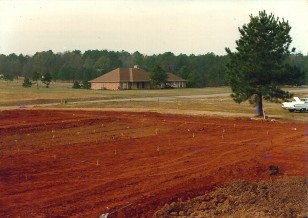
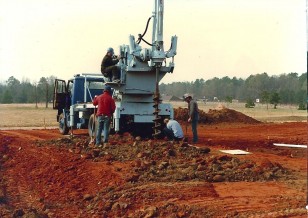
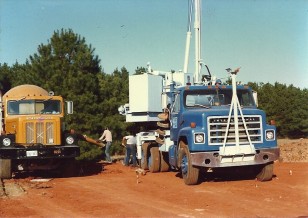
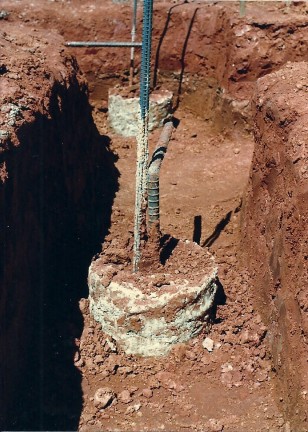
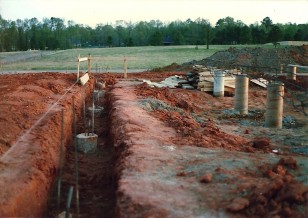
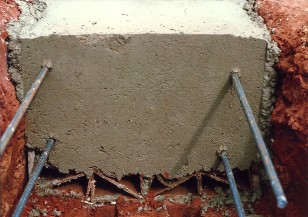
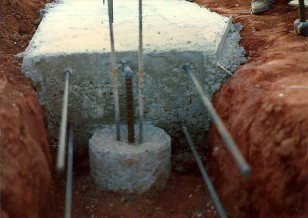
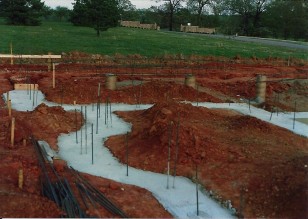
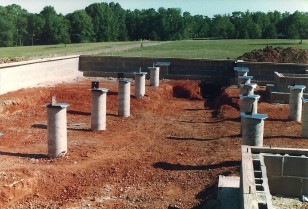
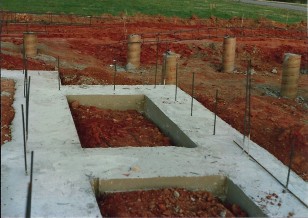
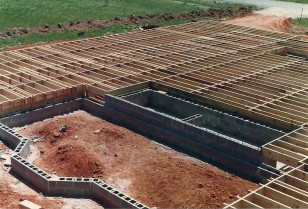
The Foundation is an independent management consultancy, specialising in customer strategy , propositions , and experiences